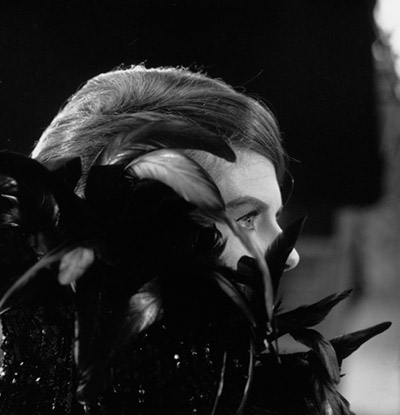|
Reviews of Recent Independent, Foreign, & Documentary Films in Theaters and DVD/Home Video
Directed by Alain Resnais Produced by Pierre Courau & Raymond Froment Written by Alain Robbe-Grillet Director of Photography, Sacha Vierny Edited by Henri Colpi & Jasmine Chasney Music by Francis Seyrig Released by Rialto Pictures France/Italy. 93 min. Not Rated With Delphine Seyrig, Giorgio Albertazzi & Sacha Pitoëff With every luscious frame, Alain Resnais’s Last Year at Marienbad will make you yearn for the days of black-and-white films. His elliptical storytelling, building on one enigma after another, may strike some as an extended and perplexing experimental feature film, but more likely than not, the film will lure viewers with its mesmerizing tracking shots of a cavernous, gloomy baroque hotel at it most opulent. The camera glides over sculptured doorways, along gold latticework creeping up the ceiling, and through the trompe l’oeil architecture as organ music eerily reverberates and a narrator hypnotically drones. (Most of the interiors and gardens were filmed in the Bavarian Nymphenburg Castle, a gilded time capsule.) In the palatial casino, a tuxedoed man (Giorgio Albertazzi, also the narrator) meets a former, and married, lover (Delphine Seyrig) and ardently attempts to pick up where they left off last summer in Marienbad, urging her to run away with him, but their recollections don’t match. Maybe, the woman supposes, they met in Frederiksbad. Like many of Resnais’s films, Marienbad deals, or rather plays, with memory through flashbacks, conjecture, possible hallucinations, and flights of imagination. Unlike the surrounding French garden with its rigid lines, the narrative is nothing but twisted. (If the transitions and juxtaposition of scenes come off as baffling, check out his 1963 film Muriel, where the editing is more complex.) In contrast to much of what was going on in French cinema, Resnais was (and still is, at 85), boldly theatrical. There’s a deliberate archness to the entire film. Scenes play out as if on a proscenium stage, and the posh hotel guests, beautifully decked out, stand and model like mannequins. In the man's recollections, the acting style takes its cue from silent film. Seyrig, with her pale skin, smokey eyes, and slicked-back page-boy hairdo, is a ’60s Garbo at her most coquettish – head bowed and tucked under her shoulder – or a vamp, black-clad with shimmer feathers, sashaying up an oversized stairway. (Coco Chanel designed her wardrobe.) The film’s tableau-like scenes have since been copied by advertisers; but one could say that the poised cast also inspired the late-’80s “vogue” dance trend.
The film’s meaning (or lack thereof) may not incite as much heated debate as it did over 40 years ago. Any number of resolutely opaque films have come
and gone in the meantime. (Is a shot of the woman’s husband at a shooting gallery a foreshadowing of death or just a tease?) But what stands out
is its dreamy atmosphere, the beautiful last gasp of black-and-white cinematography.
Kent Turner
|


